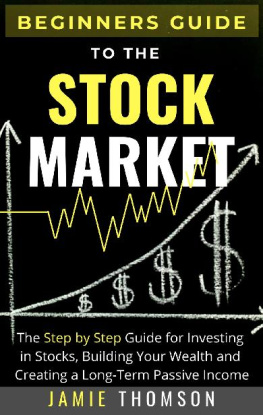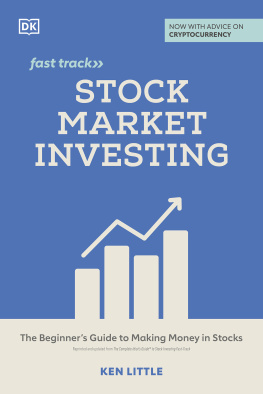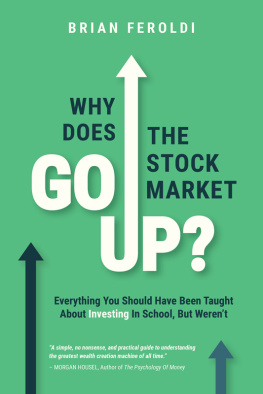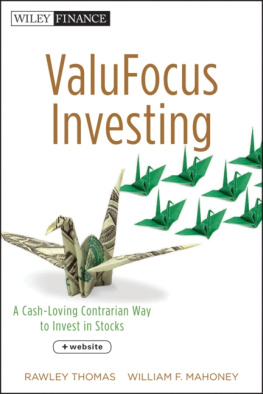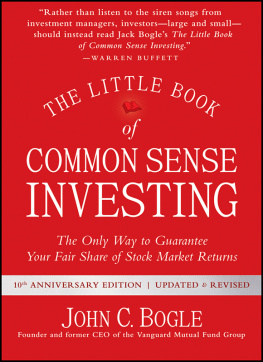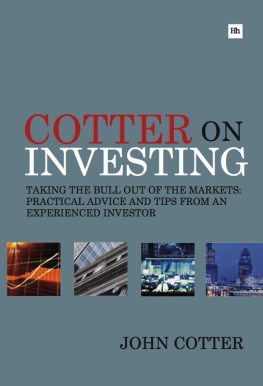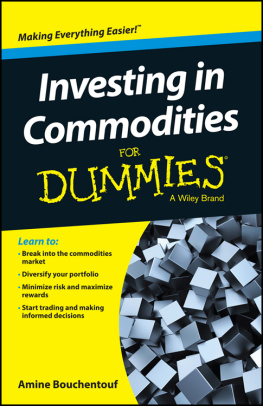Brian Nichols - Taking Charge with Value Investing: How to Choose the Best Investments According to Price, Performance, & Valuation to Build a Winning Portfolio
Here you can read online Brian Nichols - Taking Charge with Value Investing: How to Choose the Best Investments According to Price, Performance, & Valuation to Build a Winning Portfolio full text of the book (entire story) in english for free. Download pdf and epub, get meaning, cover and reviews about this ebook. year: 2013, publisher: McGraw Hill LLC, genre: Business. Description of the work, (preface) as well as reviews are available. Best literature library LitArk.com created for fans of good reading and offers a wide selection of genres:
Romance novel
Science fiction
Adventure
Detective
Science
History
Home and family
Prose
Art
Politics
Computer
Non-fiction
Religion
Business
Children
Humor
Choose a favorite category and find really read worthwhile books. Enjoy immersion in the world of imagination, feel the emotions of the characters or learn something new for yourself, make an fascinating discovery.

- Book:Taking Charge with Value Investing: How to Choose the Best Investments According to Price, Performance, & Valuation to Build a Winning Portfolio
- Author:
- Publisher:McGraw Hill LLC
- Genre:
- Year:2013
- Rating:5 / 5
- Favourites:Add to favourites
- Your mark:
Taking Charge with Value Investing: How to Choose the Best Investments According to Price, Performance, & Valuation to Build a Winning Portfolio: summary, description and annotation
We offer to read an annotation, description, summary or preface (depends on what the author of the book "Taking Charge with Value Investing: How to Choose the Best Investments According to Price, Performance, & Valuation to Build a Winning Portfolio" wrote himself). If you haven't found the necessary information about the book — write in the comments, we will try to find it.
This book will be welcomed by anyone looking to break free from their financial advisor and manage their own savings.
DAVID JACKSON, founder and CEO, Seeking Alpha
The world is an uncertain place. This uncertainty impacts the financial markets as much, if not more, than any other space. But dont be afraid! Brian Nichols provides a personal, experience-based, and highly accessible framework for taking your investment portfolio into your own hands. Theres nothing pretentious or complicated about Brians approach. Its straightforward common sense on how to invest in the stock market.
ROCCO PENDOLA, Director of Social Media at TheStreet.com and cofounder of the Options Investing Newsletter
For investors who want discipline, or who want to escape the addiction of day trading, this book is for you.
GARY ANDERSON, author of Will Rogers and Business Insider Contributor
I am pleased and honored to publish Brian Nichols articles on Market Playground and interview him on my radio program. With his new book, Brian brings his vast array of investing knowledge to the masses!
DEMIAN RUSSIAN, Editor-in-Chief, Market Playground
Theres more to investing than Buy low, sell high.
DISCOVER THE ALPHA SECRET TO VALUE INVESTINGEvery financial quarter, more than 1.5 million investors turn to Brian Nichols acclaimed Seeking Alpha columns for his insider tips on value investing. No matter whats going on in the market, hes got an uncanny knack for spotting the hottest stocks, the latest trends, and the greatest opportunities. Nowdue to popular demandhes distilled his best-kept secrets into one comprehensive, easy-to-use guide for seeking alpha and maximizing profits in any market. Youll learn how to:
Filled with step-by-step strategies for choosing stocks, how-to tips for maximizing investments, and first-hand stories of high risks and higher rewards, this is a must-have guide for any investor who appreciates the value of value.
Youll learn what the industry insiders really think about the recession, stock bubbles, balance sheets, cash flow, stock metrics, and other fundamentals of investing. Youll discover the surprising effects of human psychology on the rise and fall of the marketand learn how to keep your head and your money intact during times of extreme behavioral selling. Youll see how companies like Netflix and Apple weathered the storms of our ever-changing economyand what it ultimately means for shareholders. Most important, youll discover the most valuable lessons an investor can learn from taking a losswithout losing anything yourself.
When youre seeking alpha, youre looking for value. In companies. In stocks. In your own financial future. Thats value investing at its building for a lifetime.
Brian Nichols: author's other books
Who wrote Taking Charge with Value Investing: How to Choose the Best Investments According to Price, Performance, & Valuation to Build a Winning Portfolio? Find out the surname, the name of the author of the book and a list of all author's works by series.

